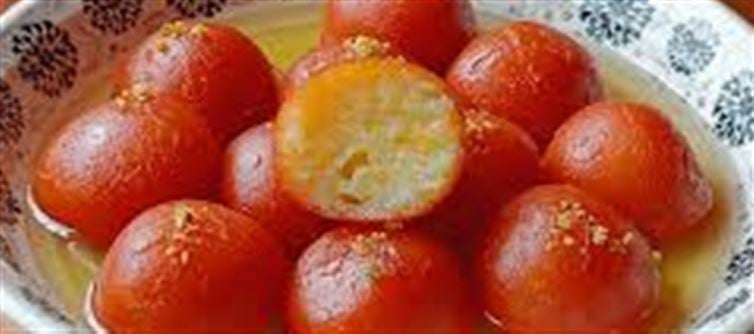
Gulab Jamun is a beloved indian sweet, famous for its melt-in-the-mouth texture and aromatic flavor. The round, deep-fried balls soaked in fragrant sugar syrup are a treat for every occasion, from festivals to celebrations. Here's a step-by-step guide to making perfect Gulab Jamun at home!
Ingredients:
For Gulab Jamun:
· 1 cup milk powder
· 2 tablespoons all-purpose flour (maida)
· 1/4 teaspoon baking soda
· 1-2 tablespoons ghee (clarified butter)
· 1/4 cup warm milk (or as needed)
· A pinch of cardamom powder (optional)
· 1 tablespoon yogurt (optional, for softer texture)
· Ghee or oil (for frying)
For sugar Syrup:
· 1 1/2 cups sugar
· 1 1/2 cups water
· 1/2 teaspoon cardamom powder
· 1 teaspoon rose water or kewra water (optional)
· A few strands of saffron (optional)
Step-by-Step Process:
Step 1: Prepare the sugar Syrup
1. In a pan, combine 1 1/2 cups sugar and 1 1/2 cups water. Stir to dissolve the sugar.
2. Bring the syrup to a boil and simmer for 5-7 minutes. You want it to reach a one-string consistency, meaning a single thread forms when you take a drop between your fingers.
3. Add cardamom powder and rose water (or kewra water) for fragrance. You can also add saffron strands to enhance the flavor and color.
4. Set the syrup aside, keeping it warm but not boiling.
Step 2: Make the gulab jamun Dough
1. In a mixing bowl, combine 1 cup milk powder, 2 tablespoons all-purpose flour, 1/4 teaspoon baking soda, and a pinch of cardamom powder.
2. Add 1-2 tablespoons of ghee to the dry ingredients and mix well. ghee helps in binding the dough and gives a rich flavor.
3. Slowly add warm milk, a little at a time, to form a soft dough. You may need more or less depending on the consistency of the dough.
4. Optionally, add 1 tablespoon yogurt to make the dough softer and fluffier.
5. Knead the dough gently for about 3-4 minutes until smooth. Let it rest for 10 minutes.
Step 3: Shape and Fry the Gulab Jamun
1. After the dough has rested, divide it into small, smooth balls. Roll the dough between your palms to form perfectly smooth balls (this ensures they don’t crack while frying). The size should be about 1 inch in diameter, as they will expand while frying and soaking in the syrup.
2. Heat ghee or oil in a pan over low-medium heat. The oil should be hot but not smoking. Test the temperature by dropping a small piece of dough; it should rise slowly to the surface.
3. Fry the gulab jamuns in batches, making sure they don’t touch each other. Gently roll them in the oil to ensure even cooking. Fry until they are golden brown and have a soft texture on the outside.
4. Once golden, immediately remove them and place them in the warm sugar syrup. Let them soak for at least 30 minutes to absorb the syrup.
Step 4: Serve and Enjoy
1. Serve the warm gulab jamuns as they are, or garnish with crushed pistachios or almonds for extra texture.
2. They taste best when served at room temperature or slightly warm, allowing the syrup to seep into every bite.
Tips for Perfect Gulab Jamun:
· Dough consistency: Make sure the dough is soft but not sticky. If the dough is too sticky, add a little more flour. If it’s too dry, add more milk.
· Frying: Fry the gulab jamuns on low to medium heat to cook them evenly and prevent them from becoming too brown or crispy.
· Syrup: The syrup should be warm when you soak the fried gulab jamuns to ensure they absorb the flavor. Make sure the syrup is not too thick or too thin—aim for a one-string consistency.
Enjoy your delicious, soft, and syrup-soaked gulab jamuns, a perfect way to end any meal with a touch of sweetness!
Disclaimer:
The views and opinions expressed in this article are those of the author and do not necessarily reflect the official policy or position of any agency, organization, employer, or company. All information provided is for general informational purposes only. While every effort has been made to ensure accuracy, we make no representations or warranties of any kind, express or implied, about the completeness, reliability, or suitability of the information contained herein. Readers are advised to verify facts and seek professional advice where necessary. Any reliance placed on such information is strictly at the reader’s own risk.
.jpg)




 click and follow Indiaherald WhatsApp channel
click and follow Indiaherald WhatsApp channel